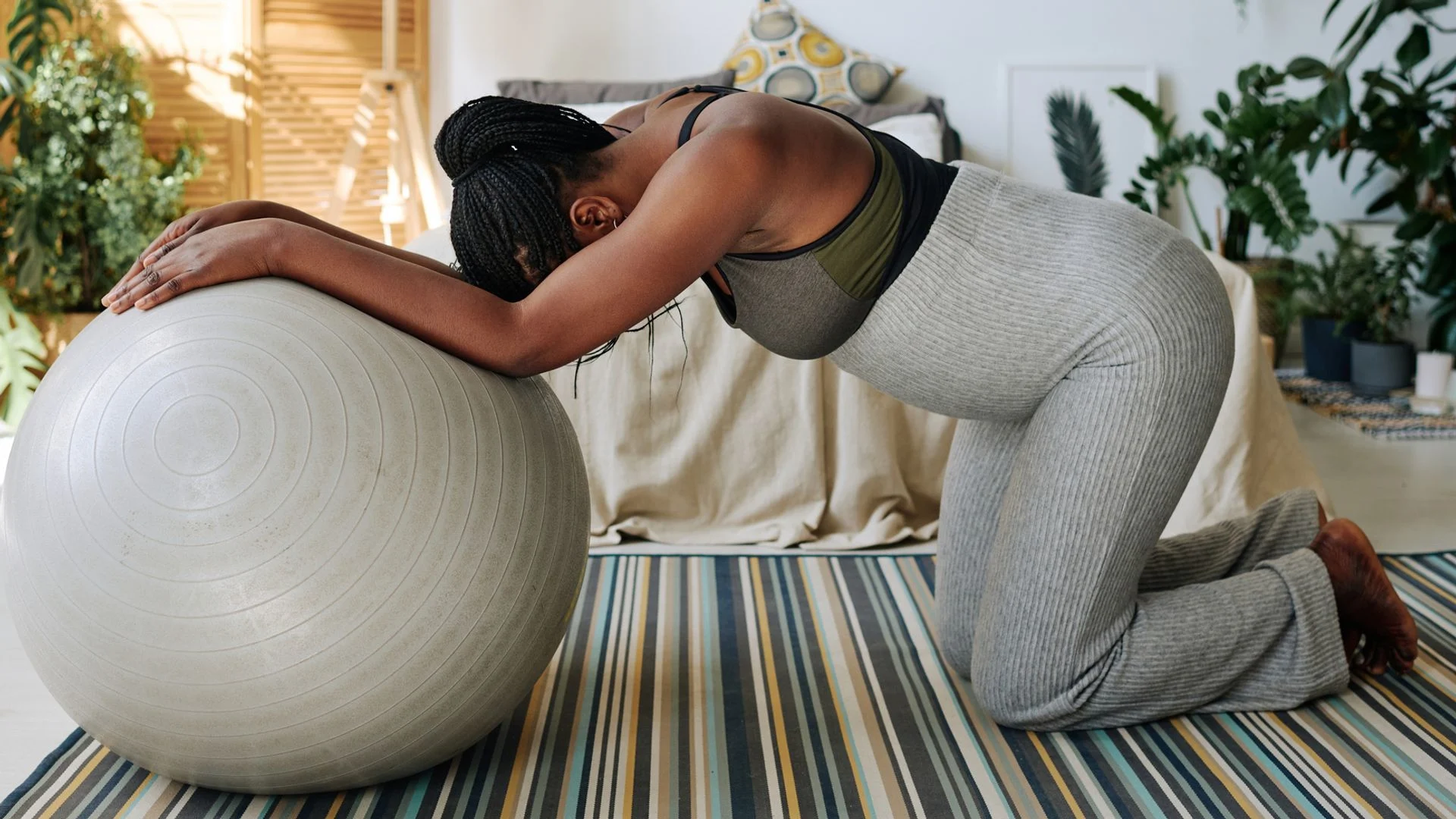By Shakira Akabusi
Copyright hellomagazine

As both a women’s health specialist and a mum, I know that preparing for labour is much more than just packing a hospital bag and writing a birth plan. It’s also about preparing your body and mind for the work they’re about to do. Labour, after all, places a huge demand on the body, and how you move during pregnancy can help to support you on the day and encourage a more efficient recovery. You don’t need any fancy equipment or hours in the gym to get labour-ready. Simple and intentional movements can help you to feel strong, mobile and relaxed.
Third-trimester intentions
By the third trimester, our bodies are working incredibly hard. Of course, every stage of pregnancy is demanding for the body; however, in the months and weeks leading up to labour, things can feel especially intense. By the third trimester, a woman’s blood volume can increase by between 40 and 60 per cent, and to pump this additional blood around the body, her cardiac output (how much blood the heart is pumping in a given period) can increase by 30 to 50 per cent! In short, our heart is working harder to nourish both mother and baby.
That’s not to say you can’t still enjoy additional exercise; in fact, it’s recommended to stay active as long as possible during pregnancy. However, I recommend to clients that at this time they should look to reduce their exertion percentage to about 50 per cent of their daily maximum, or lower if you feel you’d like to.
During pregnancy, I prefer to measure exercise intensity by percentages, as opposed to time or repetitions. This is because exertion will allow us to monitor how you feel on any given day. If, for example, you’ve had a night of disturbed sleep, our 100 per cent might be lower than if you’ve slept well, eaten well and feel more upbeat. Working with percentages means that you might be working at a lower speed, but giving the same amount of effort. Thereby supporting the body with gentle but intentional movements.
Similar to cardiovascular intensity, when it comes to lifting weights by the third trimester, I advise clients to lift around 50 per cent of their maximum. This is to avoid placing increased pressure on the core and managing exertion.
Labour preparation
Throughout pregnancy, you’ll undoubtedly hear a lot about Kegel exercises and how to make sure you’re creating a strong pelvic floor. But when it comes to labour preparation, you need to flip things on their head a little bit. Because during labour, you want to actually encourage a relaxed and released pelvic floor, in order to allow the baby to descend down the birth canal.
There are a few key exercises I’d recommend in the lead up to labour, for example, the butterfly breathing position or the child’s pose. Butterfly breathing (where you lie on the floor or sit against a wall, place the soles of your feet together and allow your knees to drop to the side) is great as it places the pelvic floor into a lengthened phase. Taking a deep inhale from here, as you relax, the pelvic floor allows us to encourage deep core release and relaxation.
Lying on your back can feel uncomfortable during the third trimester and isn’t recommended for long periods of time, so the butterfly position can be amended to be seated against a wall or by placing a few pillows behind your back to elevate the head, shoulders and torso off the ground.
If, however, you are experiencing any pelvic girdle pain, where aches and strains can be felt in and around the pelvis, you might find this leg position uncomfortable, in which case child’s pose can be a better option. You can also elevate our body by placing our forearms onto the seat of a chair, creating a decline position and allowing more space for the bump.
Interestingly, your pelvic floor is also connected via deep body tissue all the way up to your jaw. Often during labour, women are encouraged to relax their jaw, as this can trigger release in the deep core as well. Throughout both of the above movements, you will want to focus on keeping your jaw relaxed, shoulders down and toes unclenched. This will also help to ease tension in the pelvic floor and deep core.
Staying active in labour
Staying active during labour for as long as possible, often throughout, is a popular practice for many women and is encouraged by the World Health Organization. Movement can help to encourage the baby down into the pelvis, and studies show that staying upright and active can allow the pelvis to open wider than when resting in a bed. Research also suggests that being active and mobile in labour can lead to a shorter labour time, and there may be less need for other medical interventions such as forceps.
Walking, squatting, lunging or sitting on a birth ball are all popular ways to stay mobile during labour, and all of these can be practised ahead of time to encourage the baby into the optimum position for labour. In the third trimester, consider supporting your squats and lunges by holding on to the back of a chair or sideboard for support, or practice wall sits or sit to standing with a chair instead. These exercises help to build strength in the lower body, challenge core stability and mimic real movements during an active labour.
Circulation
As pregnancy progresses, encouraging good circulation is important to ensure both mum and baby have optimum access to nutrients and oxygen delivered via the bloodstream. Even simple changes in positions, such as shifting weight whilst sitting on a birthing ball, rolling your ankles or working on calf raises, can help to keep circulation going. Elevating your feet can also encourage return blood flow from the lower extremities.
Squats with arm circles are a fantastic way to get your blood flowing throughout the whole body during pregnancy. You can do this by starting by sitting on a chair and as you come up to standing, raising your arms overhead and sweeping backwards in a big circular motion, before sitting back down and repeating. When you move both the upper and lower body together, you improve oxygen and nutrient delivery. Squats mean you’re activating a large muscle group in the lower body, which acts like a pump, pushing the blood back up towards the heart (calf raises are also fantastic for this), whilst arm raises and circles are stimulating blood flow around the upper body.
What is the most important support for our body in the third trimester? Rest! Exercise and movement are so important, but equally so is rest! While movement helps to build strength, stamina and circulation, rest allows your muscles, joints and nervous system to recover and supports the body to build energy for labour. Adequate sleep and downtime also help to reduce stress and support a healthy immune system, all of which will prepare us better for labour and motherhood.
As always, you need balance. In both body and mind, and most importantly, when you move, you want to make sure you’re moving in a way that feels good, restorative, and that leaves you feeling positive and in tune with your body.



